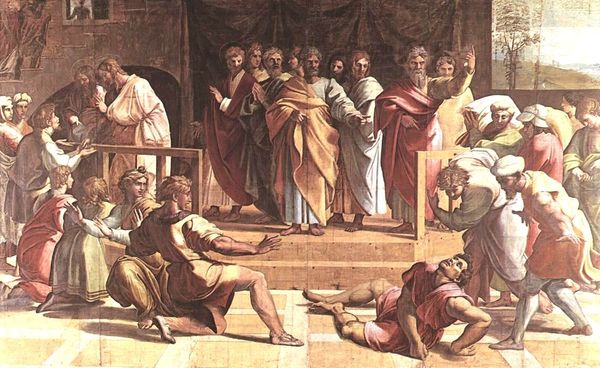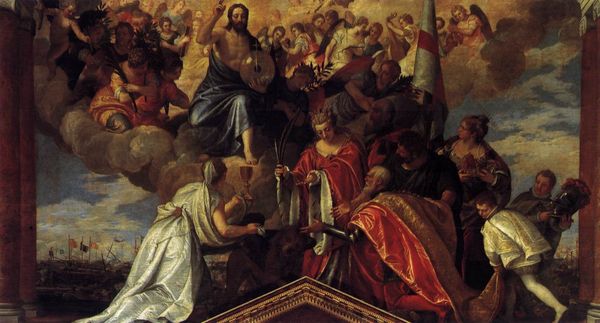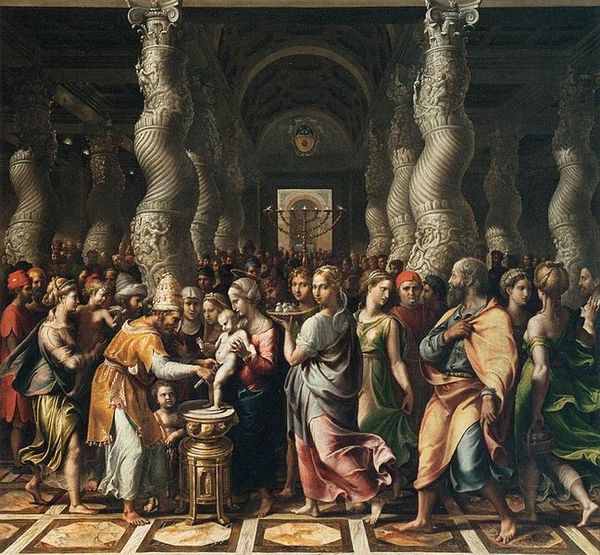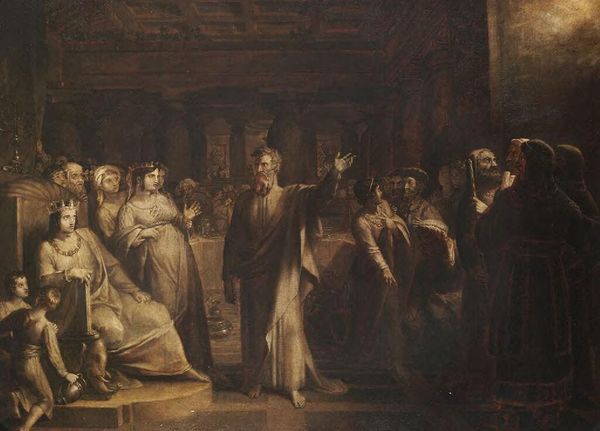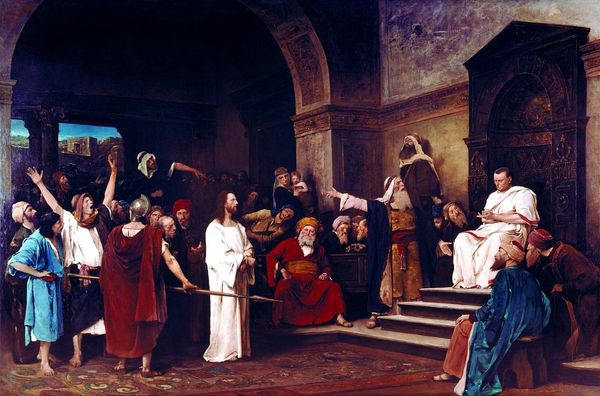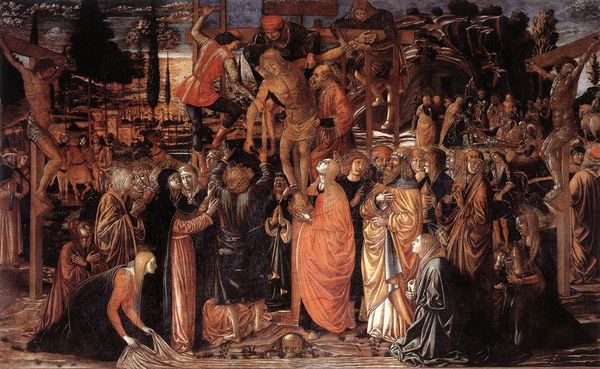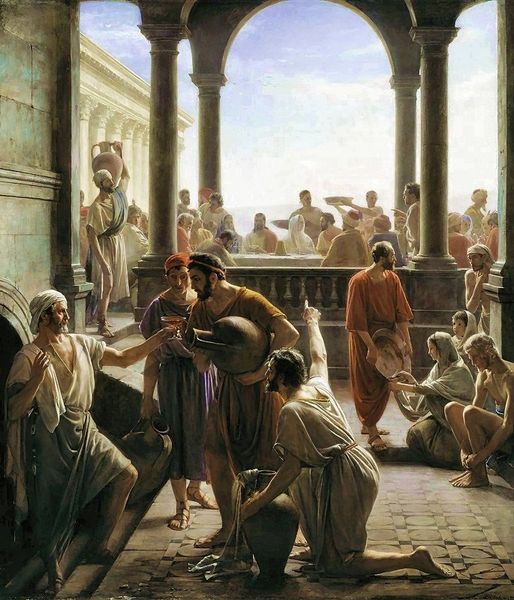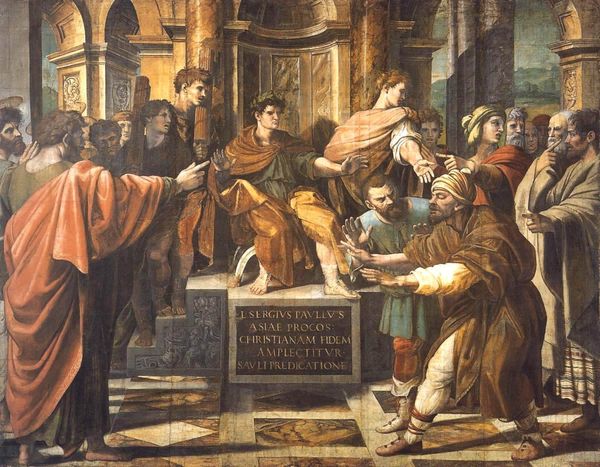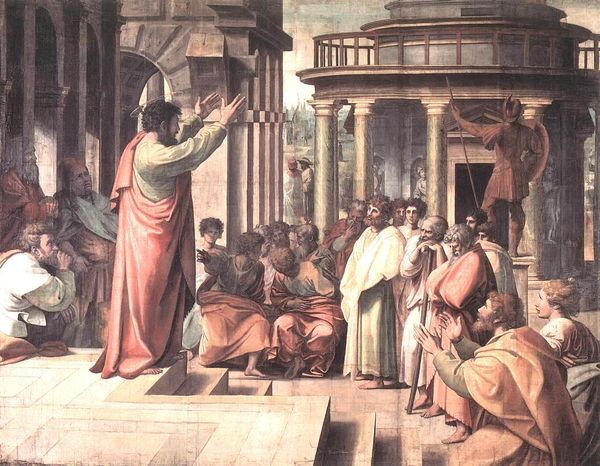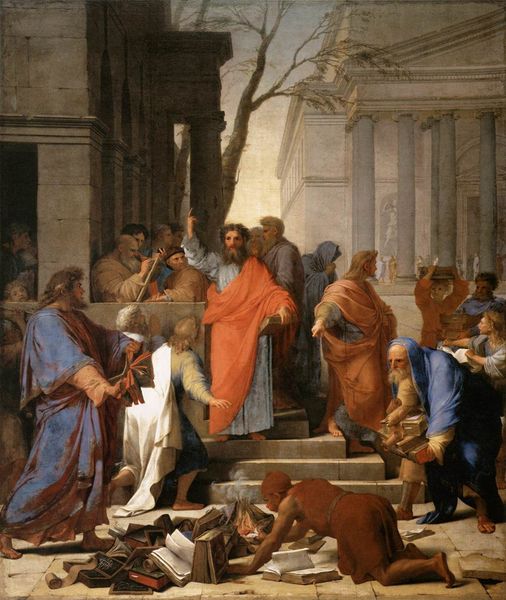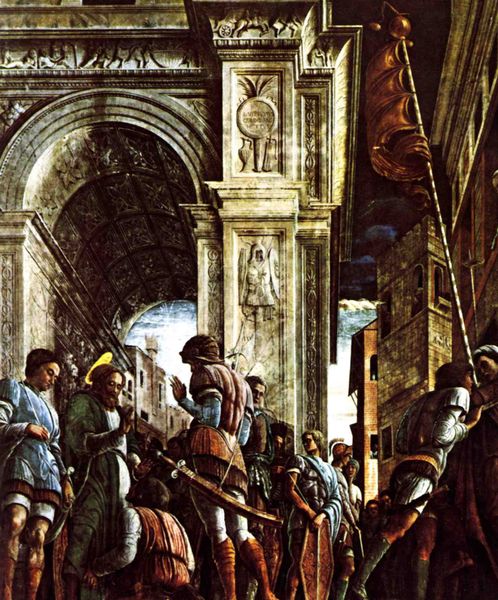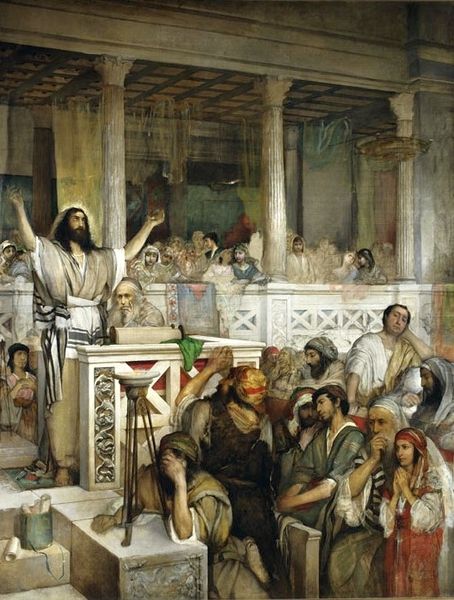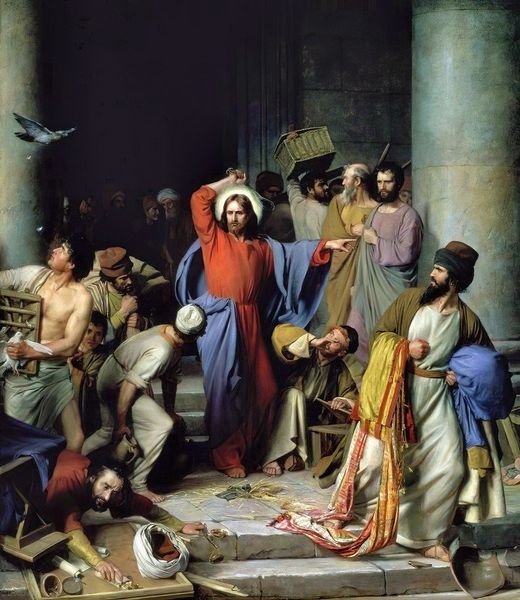
Copyright: Public domain
Curator: Here we have Mihály Munkácsy's "Ecce Homo!", completed in 1896. It depicts the biblical scene of Pontius Pilate presenting Christ to the crowd. Editor: The first thing that strikes me is the scale, and the sheer density of bodies. It's like a human tide surging toward the elevated platform. The muted palette amplifies the tension, and yet there is something so unsettling about the details as well. Curator: Munkácsy was deeply interested in history painting, particularly subjects allowing exploration of moral dilemmas within a large, public spectacle. It speaks volumes about the power dynamics he aims to capture. Editor: Absolutely. It's as if Munkácsy has analyzed the labor involved in crafting each of those individuals and positioned them in their material settings. Even Pilate seems crafted, in a way, shaped by expectations as he stands on that structure built no doubt by laborers. Look at the way Christ is physically positioned in relationship to those architectural and institutional pressures... Curator: Yes, this scene has a complex place in art history. He presented it not just as a religious painting, but as a statement about the state of European society. The controversy stirred speaks volumes to how public figures are interpreted. Editor: It all contributes to this overwhelming feeling of pressure—the crowd demanding a decision, Pilate performing his role, and the brutal rawness in Christ's body presented like some raw material, objectified. The entire social machine feels so weighted, doesn’t it? I keep wondering how much his handling of the paint and materials affected perceptions. Curator: And let's not overlook Munkácsy’s place in shaping the historical imaginary of the time, a challenge for both artists and the societies that beheld them. His choices had implications for how religious stories became part of modern public consciousness. Editor: Looking closely reveals the individual struggles and negotiations taking place at ground level. It also causes you to think of Munkácsy's labor and handling of the oil paints—his own social and historical struggles brought into focus here on the canvas. Curator: Munkácsy leaves us to reflect not only on the historical moment but also on our own relationship to crowds, power, and judgment in contemporary society. Editor: It leaves me thinking about the social and material burden of responsibility and culpability involved in such dramas. The act of observing it requires as much self-awareness as scrutinizing any other element of production here.
Comments
No comments
Be the first to comment and join the conversation on the ultimate creative platform.
